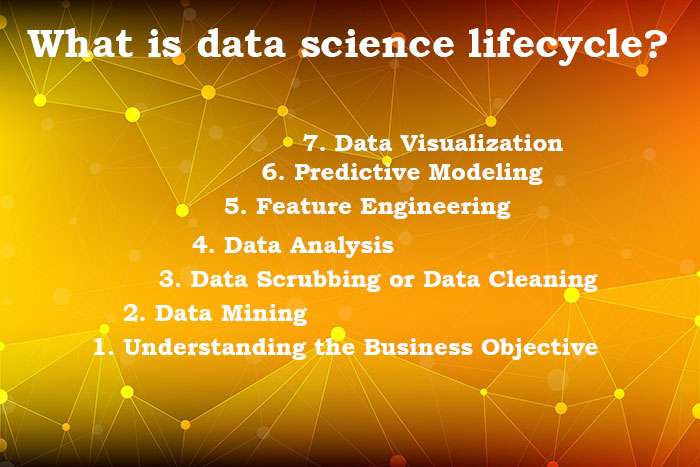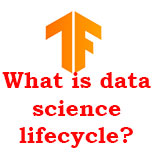Data Science Lifecycle - What is data science lifecycle? Understanding the lifecycle of a Data Science project
The entire process of gathering, cleaning and scrubbing, exploring, modelling and interpreting data make the data science lifecycle. A data scientist needs to take care of all these processes to relevant insights and make them useful for practical business purposes.
What is data science lifecycle?
Data science lifecycle is usually defined by the phases of creating, testing, iterating and deploying the data science application. Continuous Delivery Cycle is one of the phases that can occur in the lifecycle of data science project. In data science project also team is involved in continuous development and up-gradation of model/software/system/hardware to meet the new challenges of project.
What is data science pipeline?
A data science pipeline is the software engineering tooling that describes the software development process. It is comprised of software tasks or steps that defines the application flow and can be divided into several layers. The data science pipeline remove the manual process of integrating all the data processing and visualization steps. Here software system and user defined configuration is used to deploy and run the pre-define steps of large data processing cluster.

What is data science environment?
Data scientists rely on a project and pipeline that incorporates continuous feedback loops and can be broken down into many layers to satisfy many criteria. Data science environment is the technology stack and structure for all data scientists who require a large scale data analysis solution. It is closely related to the process from collection to analysis to visualization to sharing.
Understanding Data Science Lifecycle
Now we will discuss data science lifecycle in detail.
Let us have a look at different processes that make a data science lifecycle.
1. Understanding the Business Objective
Every data science project needs an objective or to say more specifically, it needs to deliver a solution to a problem. So, the data science project must explain what objective the project will serve. To set the objective of a data science project answers to 5 specific questions need to be obtained. Here are they.
- How much data? (regression)
- Which category of data? (classification)
- Which group of data? (clustering)
- Is there anything weird? (anomaly detection)
- What are the options to be adopted? (recommendation)
- What are the variables of required predictions?
2. Data Mining
As soon as the objective of the Data Science Project is clear, you need to start gathering data from different sources with a keen eye on the relevance. To validate the relevance of the data you can query the data either through SQL queries or by using third party dataframe tools like Pandas. There are really countless tools that being integrated with mobile apps and web interfaces can fetch relevant user data. Google Analytics is one of them besides several others.
3. Data Scrubbing or Data Cleaning
Now, after gathering your data you need to prepare them for use. This process which is called as data cleaning or data scrubbing is a time consuming one. The process of preparing data often consume 80% of the time in a data science project. It is time consuming because data cleaning process needs to deal with a variety of scenarios. Different types of inconsistencies, additional qualifications of data and variety of categories necessitate a variety of preparatory methods to organise the data.
4. Data Analysis
When the data cleaning is done delivering you a fresh set of neatly organised data, finally it is time to start analysing data. This process referred to as data analysis or data exploration helps understanding the patterns, trends and biases in data. By using various analysis methods the data scientists can also come with hypotheses about the data in relation to the problem your reject is supposed to solve.
5. Feature Engineering
Feature engineering is the term given to the possible signs of a particular problem. For instance, if the data analysis by exploring the scores and various aspects of a student’s development comes to a possible finding that the student is not getting enough sleep, it is a feature that data scientists need to deal with. For transforming the raw data into data-driven features, this process is important.
6. Predictive Modeling
Now that the data exploration and feature engineering completely unveiled the underlying insights and various features corresponding to the objective problem, it is time for the predictive modelling to take over and predict the size, length and impact of the problems and their respective solutions. This is the most complex process involving various data and statistical models.
7. Data Visualization
Data visualization is the specialised field responsible for putting the data insights and predictive findings into a visual format involving communication skills, command over statistical presentations, customer psychology and aesthetics. The ultimate objective of data visualisation is to present data driven insights and statistical findings through visually optimised formats.
Conclusion
Now in the end, you need to measure the outcome of the entire data science project lifecycle against your project goals. The success of the project depends upon how the entire process can successfully engineer insights and predictions for creating solutions to the problems.
